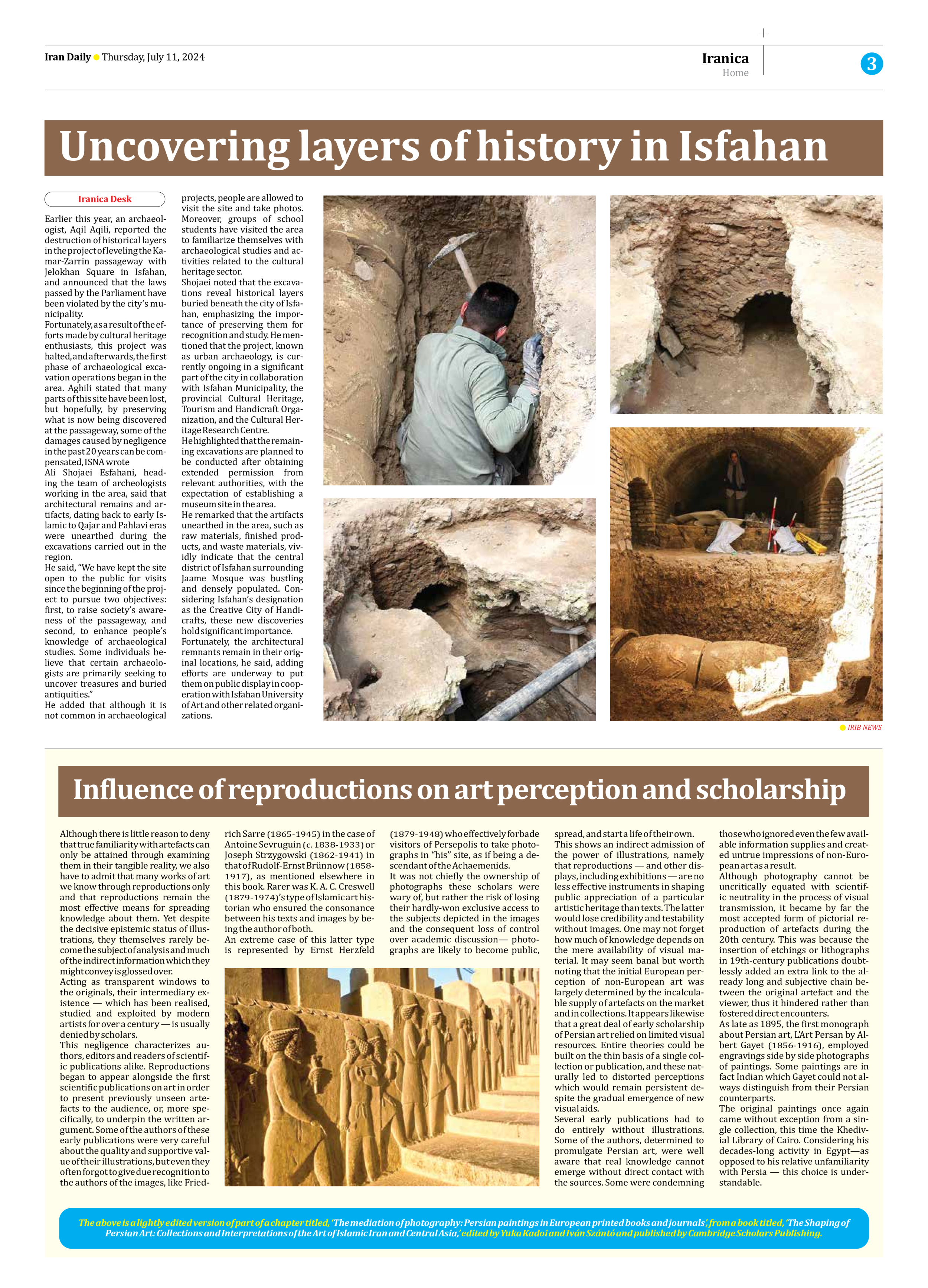
Uncovering layers of history in Isfahan
Earlier this year, an archaeologist, Aqil Aqili, reported the destruction of historical layers in the project of leveling the Kamar-Zarrin passageway with Jelokhan Square in Isfahan, and announced that the laws passed by the Parliament have been violated by the city’s municipality.
Fortunately, as a result of the efforts made by cultural heritage enthusiasts, this project was halted, and afterwards, the first phase of archaeological excavation operations began in the area. Aghili stated that many parts of this site have been lost, but hopefully, by preserving what is now being discovered at the passageway, some of the damages caused by negligence in the past 20 years can be compensated, ISNA wrote
Ali Shojaei Esfahani, heading the team of archeologists working in the area, said that architectural remains and artifacts, dating back to early Islamic to Qajar and Pahlavi eras were unearthed during the excavations carried out in the region.
He said, “We have kept the site open to the public for visits since the beginning of the project to pursue two objectives: first, to raise society’s awareness of the passageway, and second, to enhance people’s knowledge of archaeological studies. Some individuals believe that certain archaeologists are primarily seeking to uncover treasures and buried antiquities.”
He added that although it is not common in archaeological projects, people are allowed to visit the site and take photos. Moreover, groups of school students have visited the area to familiarize themselves with archaeological studies and activities related to the cultural heritage sector.
Shojaei noted that the excavations reveal historical layers buried beneath the city of Isfahan, emphasizing the importance of preserving them for recognition and study. He mentioned that the project, known as urban archaeology, is currently ongoing in a significant part of the city in collaboration with Isfahan Municipality, the provincial Cultural Heritage, Tourism and Handicraft Organization, and the Cultural Heritage Research Centre.
He highlighted that the remaining excavations are planned to be conducted after obtaining extended permission from relevant authorities, with the expectation of establishing a museum site in the area.
He remarked that the artifacts unearthed in the area, such as raw materials, finished products, and waste materials, vividly indicate that the central district of Isfahan surrounding Jaame Mosque was bustling and densely populated. Considering Isfahan’s designation as the Creative City of Handicrafts, these new discoveries hold significant importance.
Fortunately, the architectural remnants remain in their original locations, he said, adding efforts are underway to put them on public display in cooperation with Isfahan University of Art and other related organizations.







